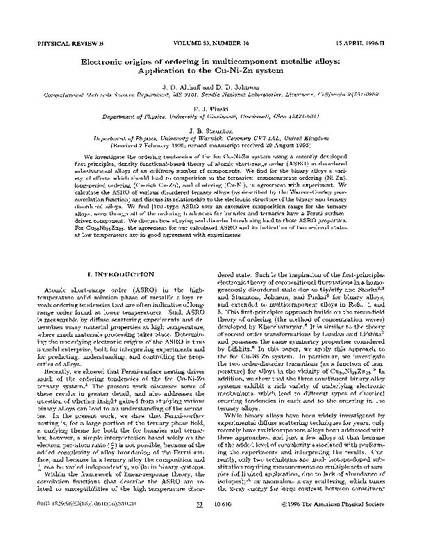
Article
Electronic origins of ordering in multicomponent metallic alloys: Application to the Cu-Ni-Zn system
Physical Review B
(1996)
Abstract
We investigate the ordering tendencies of the fcc Cu-Ni-Zn system using a recently developed first-principles, density-functional-based theory of atomic short-range order (ASRO) in disordered substitutional alloys of an arbitrary number of components. We find for the binary alloys a variety of effects which should lead to competition in the ternaries: commensurate ordering (Ni-Zn), long-period ordering (Cu-rich Cu-Zn), and clustering (Cu-Ni), in agreement with experiment. We calculate the ASRO of various disordered ternary alloys (as described by the Warren-Cowley pair-correlation function) and discuss its relationship to the electronic structure of the binary and ternary disordered alloys. We find [100]-type ASRO over an extensive composition range for the ternary alloys, even though all of the ordering tendencies for binaries and ternaries have a Fermi-surface—driven component. We discuss how alloying and disorder broadening lead to these ASRO properties. For Cu50Ni25Zn25, the agreement for our calculated ASRO and its indication of two ordered states at low temperature are in good agreement with experiments.
Disciplines
Publication Date
April 15, 1996
Publisher Statement
Copyright 1996 American Physical Society
Citation Information
J. D. Althoff, Duane D. Johnson, F. J. Pinski and J. B. Staunton. "Electronic origins of ordering in multicomponent metallic alloys: Application to the Cu-Ni-Zn system" Physical Review B Vol. 53 Iss. 16 (1996) Available at: http://works.bepress.com/duane_johnson/64/
